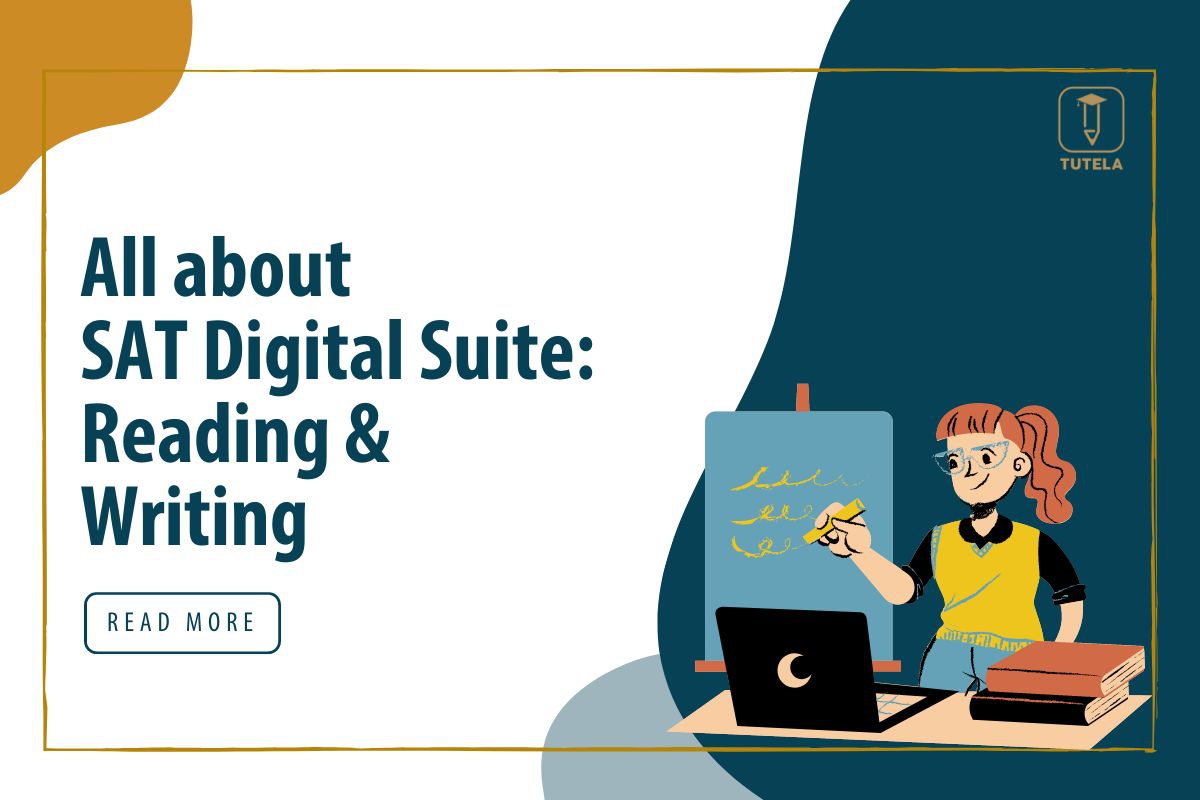
The Reading and Writing section of the SAT Digital Suite is a crucial part of the standardized test and is designed to evaluate a student's ability to understand, analyze, and evaluate written texts. This section consists of two parts: the Reading Test and the Writing and Language Test.
Reading Test: The Reading Test is designed to assess the student's ability to understand and analyze written texts. The questions in this section are based on long and short passages and are designed to test the student's ability to identify main ideas, draw inferences, make connections, and understand the author's use of language. The passages are taken from a variety of sources, including fiction, non-fiction, and historical documents.
Writing Test: The Writing and Language Test is designed to assess the student's ability to understand and use standard written English. The questions in this section are based on passages that include common grammar and usage errors, as well as other writing and language-related problems. The student is required to identify the errors and make corrections to improve the passage. The passages in this section come from a variety of sources, including advertisements, instructions, and opinion pieces.
In both the Reading Test and the Writing and Language Test, students are given 35 minutes to complete the section. The SAT Digital Suite uses a computer-based format, allowing students to type their answers directly into the test. This can be a significant advantage for students who prefer a keyboard over a pencil and paper, as it allows for faster and more efficient completion of the test.
| Characteristic | Digital SAT Suite Reading and Writing Section |
| Administration | Two-stage adaptive test design: one Reading and Writing section administered via two separately timed modules |
| Test length (number of operational and pretest questions) | 1st module: 25 operational questions and 2 pretest questions 2nd module: 25 operational questions and 2 pretest questions Total: 54 questions |
| Time per module | 1st module: 32 minutes 2nd module: 32 minutes Total: 64 minutes |
| Reading and Writing Section Question Sequence | |
| Readingand Writing Module | Content Domain Sequence |
| Module 1 | Craft and Structure questions Information and Ideas questions Standard English Conventions questions Expression of Ideas questions |
| Module 2 | Craft and Structure questions Information and Ideas questions Standard English Conventions questions Expression of Ideas questions |
The SAT Reading and Writing passages are typically made up of 25 to 150 words, and they come from a variety of sources, including literature, history/social studies, the humanities, and science. The passages are designed to challenge the student's ability to understand and analyze written texts, and to evaluate the author's use of language and rhetoric.
The questions on the SAT Reading and Writing section are designed to test the student's ability to comprehend and analyze the passages, as well as their knowledge of standard written English. The questions fall into four main categories:
| Content Domain | Domain Description (Claim) | Skill/Knowledge Testing Points | Operational Question Distribution |
| Information and Ideas | Students will use comprehension, analysis, and reasoning skills and knowledge as well as what is stated and implied in texts (including in any accompanying informational graphics) to locate, interpret, evaluate, and integrate information and ideas. | Central Ideas and Details Command of Evidence • Textual • Quantitative Inferences |
≈26% / 12–14 questions |
| Craft and Structure | Students will use comprehension, vocabulary, analysis, synthesis, and reasoning skills and knowledge to use and determine the meaning of high utility academic words and phrases in context, evaluate texts rhetorically, and make supportable connections between multiple topically related texts | Words in Context Text Structure and Purpose Cross-Text Connections | ≈28% / 13–15 questions |
| Expression of Ideas | Students will use revision skills and knowledge to improve the effectiveness of written expression in accordance with specified rhetorical goals. | Rhetorical Synthesis Transitions | ≈20% / 8–12 questions |
| Standard English Conventions | Students will use editing skills and knowledge to make text conform to core conventions of Standard English sentence structure, usage, and punctuation | Boundaries Form, Structure, and Sense | ≈26% / 11–15 questions |
Overall, the SAT Reading and Writing section is designed to test a wide range of skills and knowledge related to reading comprehension, rhetoric, and language use, and it provides a comprehensive evaluation of the student's abilities in these areas.
We understand this section doesn't come very easy to students while scoring, but rest assured it can be mastered with correct practice and guidance.
While some students have a natural flare for reading, others struggle. However, one should understand that comprehension skills can be developed easily. All it requires is a bit of hard work and letting go of the aversion to reading “boring” passages.
Reading sections are more about mental makeup and practice than about tricks or tips. There are no special tricks for getting a perfect score in the reading section. The only trick is – CRAZY PRACTICE !!
Students can take refer our curated list of books or hop on to best article collection to enhace their reading skills.
For one-on-one assistance with SAT or ACT in general, contact Tutela: Tutela’s Assistance Student Form